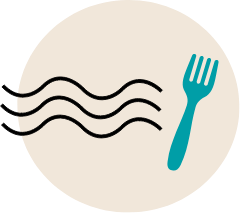Last Updated on May 20, 2015 by Chef Mireille
I came across a very interesting paper I had written when I was in culinary school on Kashmiri culture and cuisine. Here are some excerpts from it to give you some insight into this distinct, regional cuisine of India, as well as cultural eating traditions. Don’t forget to check out my delicious recipe for Rogan Josh, the state dish of Kashmir!!
Indian food is very popular. Anywhere you go in America now, even small towns, Indian restaurants are found. While this is true, most of the food presented in these generic Indian restaurants, is Punjabi food, from the Indian state of Punjab. However, Indian food is very regional from the hot curries of Goa to the sweet curries of Gujerat. Only restaurants that advertise regional Indian cuisine, can dishes like Kashmiri Rogan Josh and Dum Aloo be found on the menu, usually in bigger cities like New York and Los Angeles.
Kashmir is unique because they eat rice with their meals, eventhough most North Indians eat bread. Most Indians eat meat as a side dish, not the main course. Not more than 2-3 ounces of meat are usually eaten at a meal. This is not the case for Kashmiris. Kashmiris eat a lot of meat. Most people who belong to the (very small population in recent years due to struggles with the Islamic mujahideen) Pandit class of Hindus are vegetarians. Kashmiris are not. Their meat of preference is lamb. Their meals consist of a meat course, rice, dahl and a vegetable course. Also, chutneys and pickles are used as condiments, as well as raita (yogurt, sometimes made with cucumber or herbs). These pickles are pickled fruits and vegetables that are made at home. They are generally pickled with mustard seeds, mustard oil, Kashmiri chilies, coriander, mint and other spices. European style breads or bagels are eaten for breakfast with these pickles.
No dish more represents Kashmir with its abundance of readily available spices than it’s state dish:
Chef Mireille
https://www.globaltasteinc.com
Like me on FACEBOOK!
Follow me on TWITTER!



Nice write about the cuisine.